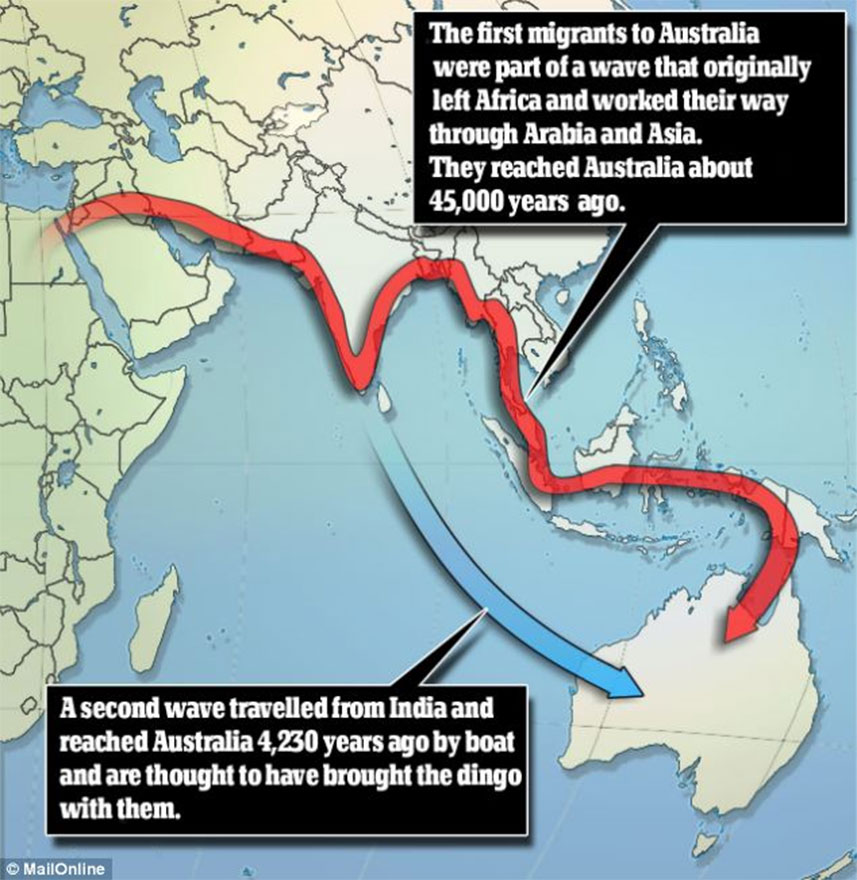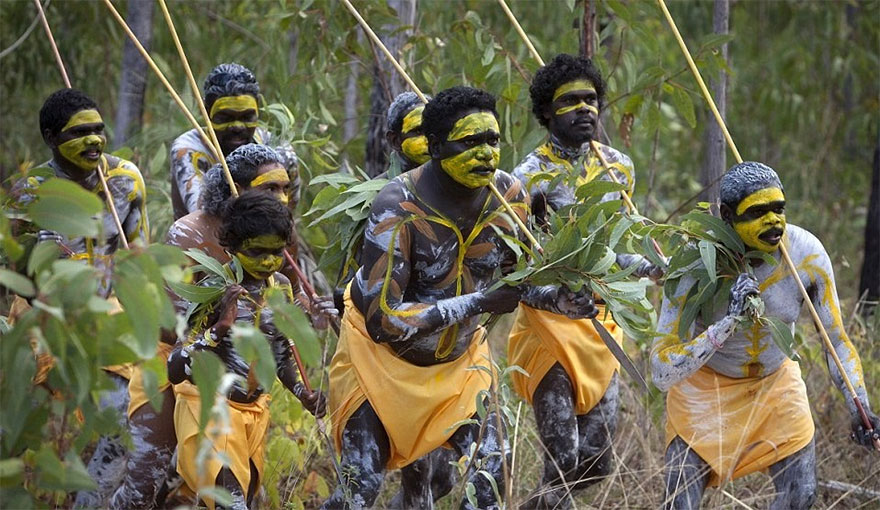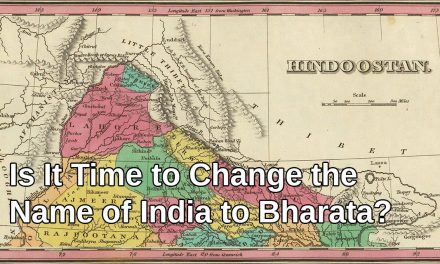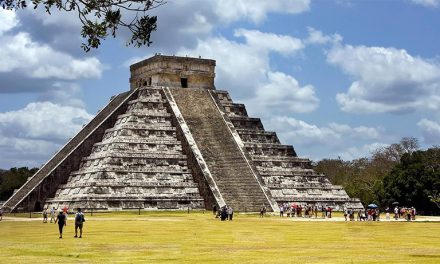Australia was settled by a wave of immigrants from India a little more than 4,000 years ago, a genetic study shows.
The finding overturns the view that the continent was isolated from the time it was first colonised about 45,000-50,000 years ago until Europeans discovered Australia in the eighteenth century.
DNA evidence suggests that rather than complete most of the journey over several generations by foot, the Indian migrants came over by boat.
[wp_ad_camp_1]
Australia’s first human colonisation was the culmination of the long walk out of Africa by the human species.
Humans are believed to have left Africa, via the Arabian coast and through India before reaching Indonesia and New Guinea and finally over an ancient land bridge to Australia.
Following their arrival there was, according to ‘the prevailing view’, little if any contact between Australia’s Aboriginal inhabitants and the rest of the world.
But DNA evidence has now revealed a second wave of human settlement took place about 4,230 years ago, long before the first European settled there.
Australia was first seen by a European in 1606 when it was sighted from a ship and a further 53 vessels arrived before Captain James Cook arrived in 1770 to claim it for Britain.
Analysis of DNA samples from Aboriginal people living in the Northern Territories of Australia today shows that they have up to 11 per cent of their genetic heritage is Indian
The new settlers came from India and the lack of their DNA in other parts of Asia suggests they sailed directly across the Indian Ocean rather than work their way towards Australia by foot.
Intriguingly, their arrival corresponds to evidence in the archaeological record that shows dingos reached Australia about the same time, suggesting they may have been transported by boat by the human settlers.
Dr Irina Pugach, of the Max Planck Institute for Evolutionary Anthropology in Leipzig, Germany, said the international research team calculated that the Indian DNA reached the Aboriginal population 141 generations ago.
Assuming that each generation is separated on average by 30 years the geneticists were able to conclude that the Indian population arrived on in Australia 4230 years ago.
‘Interestingly this date also coincides with many changes in the archaeological record of Australia, which include a sudden change in plant processing and stone tool technologies, with microliths appearing for the first time, and the first appearance of the dingo in the fossil record,’ she said.
‘Since we detect inflow of genes from India into Australia at around the same time, it is likely that these changes were related to this migration.’
Mark Stoneking, a geneticist at the Max Planck Institute, led the study and told Nature magazine: ‘Australia is thought to represent one of the earliest migrations for humans after they left Africa, but it seemed pretty isolated after that.’
DNA from 344 people was analysed for the study, published in the journal Proceedings of the National Academy of Sciences.
Samples were taken from people in Papua New Guinea, South East Asia, China, the US and Australia’s Northern Territory.
Source: dailymail.co.uk
















certain contains facts unbelieveale>Yet proud to know all this as an India.Jai Hind Chandru Advani yokohama japan
There existed a vast country ruled by ancient Tamil kings which extended from south India to Australia
namely Kapadapuram some 10000 years ago.This ancient civilization have been flooded when the sea level rose and disintegrated thus born the new land mass which was named later as Australia.Therefore they are not settlers from India They are original people living there for more than 10000 years.
Very interesting
It is indeed very interesing to know this !
DNA analysis is a very sure proof that Indians have been moving out of the subcontinent since time immemorial…
Great findings but I don’t agree them as Hindus
A very interesting reading. Thanks.
From: Jayaseelan Naidoo, Durban, South Africa. Discussion most intriguing. But you are ignoring the elephant in the room – the existence of the ancient sunken continent of Kumarikandam that connected Indian subcontinent to Africa and Australia. No discussion of this subject can justifiably avoid mention of this fact.
the information is highly educative and interesting.
Very interesting article . Modern day DNA analysis is proving so useful in establishing historical /archeological /racial facts . India’s role in history is gaining more prominence as science unearths more & more evidences . It is a historical fact that the ancient Tamil kings ruled vast parts of south-east Asia . DNA analysis & sustained archeological excavations can reveal many more hidden facts .
kapadapuram article justifies.very interesting enjoyed reading.thanks
All these prove that the Indian civilization is the oldest and our Vedas and sastras are very true and genuine.
No doubt landia has a oldest history in the world, which has been systematically destroyed by various rulers who invaded this great country. I think Mr. Thanangavelu must be thinking Hindu as religion, in those days wording HINDU was way of life which includes devotion to the God, devotion to the science, devotion to the resurch work , devotion for the good rule by the ruler. For that matter whatever you do ,do it with devotion. With this devotion only our people have moved all over the world. No wonder they must be the first to go to Great Continent , today known as Australia.
Interesting interpretation based on genetics. It would be useful to understand the details based on where in what in now “India” these genetic connections come from? “India” as a country did not exist then, and it would be important to understand which of the peoples travelled to Australia.
What the author says is that there was direct people to people contact / migration from what is now “India” to northern Australia.
Whether this was direct land connection, aka Kumarikandam or whether it was contacts by boats needs further information.
The migration shown 45,000 years ago is also interesting, suggesting people migrated around the entire coast of what is now “India” to get to Australia, rather than straight across from west to east “India”. In other parts of the world the migration is suggested across vast continents, and not just along the coastline. As Jey suggested is this the presence of the Kumari Kandam? – geologically when did it exist if it did?
There is also evidence found in New Zeland, the presence of a ship’s Bell with Tamil inscriptions, which is thought to predate the arrival of Captain Cook, that is the British in New Zealand. But this is thought to be much later than the 4,000 years talked about in this article. That is there has been ongoing contact between the Tamil areas of south Asia and Oceania – Australia and New Zealand.
Thank you for such a good website. As a Californian who attended Catholic School, we only received a brief intro and discussion of the various religions in the world. Hinduism was the one I most related to. Now, nearing midlife, I find myself also gravitating toward the Ayurvedic medicine in my own journey toward better health. Ancient knowledge sure beats the American Medical Association’s methods in regard to the holistic health. If only the medical profession here would accept and utilize this wealth of knowledge to help us heal and stay healthy. I trust and admire cultures whose knowledge goes so far back. Keep spreading your proud culture and information as you are – it is appreciated by many. Thank you!
Interesting…I’m thinking partly true.
Dingo-like dogs are found scattered throughout Southeast Asia, & could have come from anywhere. The historic trade of Aboriginals with The Maccassans is well known.
Sanskrit-type words with practically identical meanings are found scattered right across the Pacific & the Americas, & of course Australia as well, so linguistically at least, we can be sure that at some time there has been a significant interaction.
The almost complete absence (until the European invasion) of placental animals in Australia means that (human sea-borne migration aside) the continent has been pretty effectively isolated for millions, not thousands of years
Indian civilization travel all over the world.
Indian Divine Org. Thanks
Ancient people bred early and died early, so a generation is more likely 16 years, not 30. Which makes ocean migration more feasible about 2000 years ago. That would be in line with other ocean migrations , such as South seas. Also there is new evidence that the homonim genus, i.e. pre homo sapiens, could have been in places other than only Africa.
WE MUST CLAIM OUR CULTURAL COUNTRIES. WE DONOT WANT POLITICAL CONTROL, BUT ALL SUCH COUNTRIES, FROM AUSTRALIA, S-E ASIA, EVEN MIDDLE EAST ETC SHOULD HAVE A UNITY ON THE CULTURAL AND CIVILIZATION L VALUES .
A DNA analysis with aborginals of Australia , Cameron of South African country with south Indian Tamils definitely throw some interesting facts.
God says the entire history of the world revolves around five thousand years. Calculation of scientists in their own system seems to be wrong. The world drama is fast heading for winding up as we are at the very fag end of five thousand years. A new world order of angels (heaven) with plenty of peace, purity and happiness unlimited will come for which preparations are being done incognito by God father SHIVA HIMSELF.
Very good & interesting article, Thanks.
Tamil settled in Australia they spoken not only DNA,
langvaes like tamil Exp : vannam(sky) kattumaran(wood ship) kaka(crow)like so many
But pronunciation slightly its varies
not only aboriginals, Mayan, Red indian, all are Gone from Tamilnadu Kumarikadan sunken in water all are separated searched high land its happen more then 10 thousand year ago.
oldest people are tamils its proved so many people,
harappa mohnjadaru,sumariyan, pakisthan & agfanisthan,
places name all are tamil(ex: cheran, korkai,thondri,thamili ….Lot)
all over world places are 19,000 name tamil
Researcher Orissa Balu done job,
Very interesting & knowledgeable.
Very articulate, knowledgeable & befitting articles to hone skills in this field. Thanks
Indians used to go all around the world for business. In Gujarati,Gujarat there are stories about moving in the world by boats.